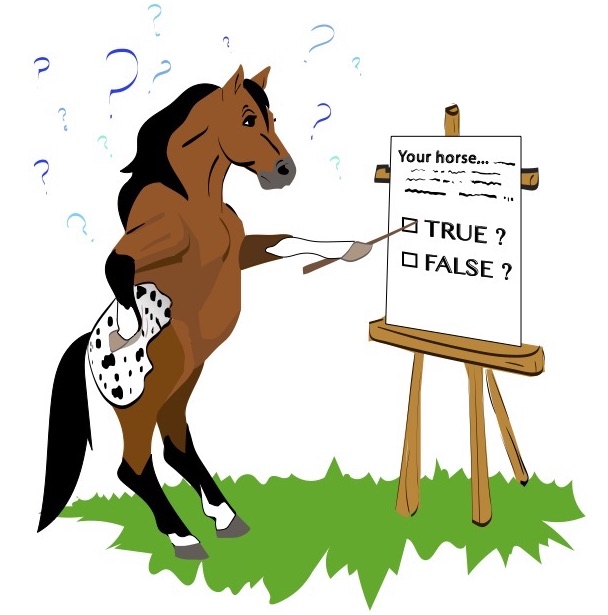
1. True or false: A hair whorl or swirl is a patch of hair growing in the same direction as the surrounding hair, but is of a different color.
T / F
2. True or false: The practice of using hair whorls or swirls as predictors of a horse’s temperament and usability dates back centuries among gypsies and Bedouins.
T / F
3. A single swirl or whorl in the center of a horse’s forehead is thought by most who study whorls to correlate with…
A) a difficult, challenging nature.
B) an uncomplicated nature.
C) a depressive nature.
4. Probably the best use of whorl theory and analysis is to…
A) keep you from buying a horse with a difficult disposition.
B) rank order the horses you own in terms of their relative value.
C) discover how best to approach a particular horse’s training.
HOW’D YOU DO? (Answers below.)
1. F is correct. A whorl grows in the opposite direction as the surrounding hair, usually in a pinwheel fashion, and is the same color as the adjacent hair. Whorls are typically called cowlicks when they appear anywhere other than on the face.
2. T is correct. Horse traders of long ago used whorls to assess a horse’s disposition. It wasn’t until the 1980s and ‘90s, however, that the practice was popularized through the books and clinics of Linda Tellington-Jones.
3. B is correct. A single, well-centered whorl is typically believed to correlate with a steady disposition. Two or more swirls in odd positions on the face are generally thought to indicate a more complicated personality in some way.
4. C is correct. Most who believe in swirl theory use it as an adjunct to other methods of evaluating a horse’s temperament, rather than as something that would keep them from buying a particular horse. But it can be helpful in deciding on training methods. As animal scientist Temple Grandin, PhD, says, you need to be especially careful not to frighten a horse that has a lot of whorls. “That’s the key in horse training, anyway—to avoid traumatizing the animal in the first place,” she maintains. (Learn more about Temple Grandin’s insights on your horse’s thoughts and feelings.)
[Find all this fascinating? Here’s more about whorls and temperament.]
Hey! Not already receiving H&R’s fun and informative newsletter? Sign up right now for The Ride.







